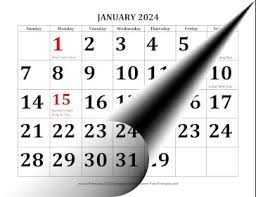
In the dynamic realm of printing, the choice between digital and offset printing for calendars is pivotal. Whether you aim to produce personalised calendar, photo calendar, or desktop calendars, understanding the appropriate calendar style for your needs is essential. This guide will explore the distinct advantages of digital and offset printing for calendars. It aims to equip you with the knowledge to choose the best option for your project, balancing quality, cost, and aesthetics.
Understanding Digital and Offset Printing
In the realm of commercial printing, two techniques stand out: digital and offset printing. Each has unique benefits, fitting different printing requirements. Let’s explore the main differences between these two processes.
What is Digital Printing?
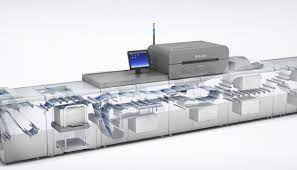
Digital printing is a direct method that skips the need for physical plates. It uses digital files and applies toner or ink directly to the material. Ideal for short to medium runs, it offers quick turnaround times and supports custom or variable data printing.
What is Offset Printing?
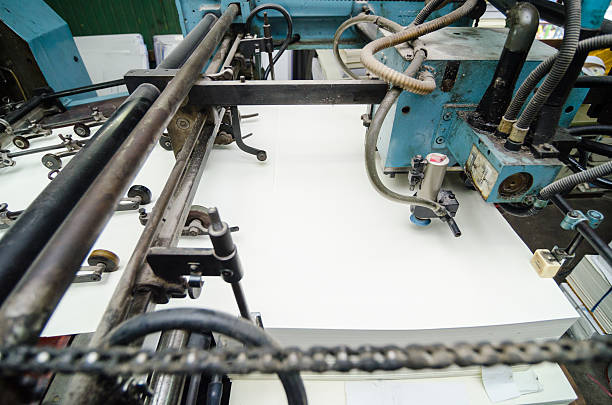
Offset printing is a traditional method that employs printing plates. The image first transfers to a rubber blanket and then to the final material. Known for superior print quality, it excels in delivering sharp images, vibrant colours, and fine dot patterns. This makes it a top choice for big projects.
Choosing between digital and offset printing hinges on factors like print volume, speed, and quality needs. It’s vital to understand each method’s strengths and weaknesses to pick the best fit for your project.
Printing Photo Calendars: Weighing the Pros and Cons
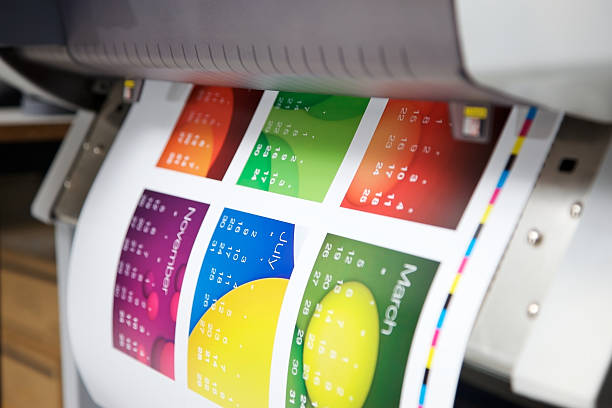
When considering printing calendars, both digital and offset printing have unique benefits. It’s crucial to understand these advantages to choose the right method for your project. Both methods offer unique benefits for custom calendar printing, catering to various needs such as business promotion, fundraising, or personal use.
Advantages of Digital Printing for Calendars
Digital printing excels in quick turnaround times and suits small to medium print runs. Digital printing is perfect for creating personalized calendars featuring your favourite photos, making them unique and sentimental. It’s perfect for personalised calendars or small business needs that require customization. Options like variable data printing and personalization are easily achievable with digital printing. This method also offers cost-effective solutions for custom calendars, photo calendars, and desk calendars, ideal for printing in smaller quantities.
Advantages of Offset Printing for Calendars
Offset printing stands out for large print runs, delivering top-notch print quality with precise colour accuracy and vibrant full colour images. It’s the go-to for high-volume orders of wire bound, saddle stitch, and poster calendars. This method ensures consistency and colour precision. Additionally, offset printing provides a broad selection of finishing options, including spot UV, foil stamping, debossing, or embossing, to enhance calendar designs.
Choosing between digital and offset printing depends on your project’s print quality, quantity, customization level, and budget. By evaluating the pros and cons of each method, you can select the best option. This ensures your calendars look professional and meet your specific needs.
Print Quality and Resolution
Choosing between digital and offset printing significantly affects the final quality and resolution of calendars. Digital printing now offers top-notch quality, with high-resolution outputs that can match offset printing for small to medium runs. Offset printing excels in large runs, delivering vibrant colours, sharp details, and precise colour matching.
The paper type, the printing company’s expertise, and the calendar’s design all impact the final quality and resolution. To get the best outcomes, it’s vital to grasp the elements that affect print quality and resolution. These include DPI (dots per inch), colour reproduction, and image sharpness. High-quality print and resolution are crucial for creating stunning photo calendars that showcase your images beautifully.
Key Considerations for Print Quality and Resolution
- High-quality image prints require a resolution of 300 DPI (dots per inch) for crisp, clear results.
- The minimum recommended resolution for printing is 300 DPI, while computer monitors typically display at 72 or 96 DPI.
- Scanned images should be saved in lossless formats like TIF or EPS to maintain colour and sharpness for printing.
- To print on a four-colour press, all RGB images must be converted to CMYK for enhanced colour reproduction.
- The selection of paper and the printing company’s expertise are key to the final print quality and sharpness of details.
Understanding the significance of print quality and resolution helps you choose the best printing method for your calendar. This ensures your final product shines with vibrant colours, sharp details, and exceptional quality.
Cost Efficiency for Printing Calendars
Producing calendars through digital and offset printing presents distinct cost dynamics. Digital printing stands out for its efficiency in small to medium print volumes, avoiding setup costs and printing plates typical of offset printing. Yet, offset printing gains an edge with larger volumes, leveraging economies of scale to reduce the cost per unit. For specific requirements, such as unique artwork or large orders, requesting a custom quote can ensure you get the best pricing for your project.
Calculating Printing Expenses and Custom Quote
When evaluating printing expenses for calendars, several factors come into play. These include setup costs, material expenses, labour, and any additional services. For example, the cost for 100 saddle stitch calendars with certain specifications is about $282. This jumps to $397 for 500 calendars and $1,831 for 5,000. Typically Wire bound Calendars are more expensive…This shows how print volume significantly affects the overall cost and efficiency.
Break-Even Point for Offset Printing
The break-even point is crucial when deciding between offset and digital printing for calendars. It’s where offset printing’s cost per unit surpasses digital printing’s, making it the more economical choice. By assessing your print run and volume needs, you can pinpoint the best printing method that fits your budget and ROI goals.
The decision between digital and offset printing hinges on various factors, including setup, material, labour, and additional service costs. Grasping these cost elements allows for a well-informed choice, ensuring the most economical approach for your calendar printing venture.
Turnaround Time and Flexibility
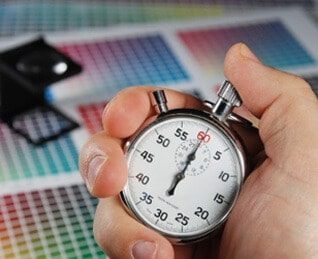
Choosing the right printing method for your calendar project is crucial. The turnaround time and flexibility of digital and offset printing are key factors. Digital printing is known for its quick turnaround, cutting out the need for plate setup. This makes it perfect for short-run or urgent projects. Digital printing’s flexibility allows you to create your own calendar with unique designs and layouts, tailored to your specific needs.
Offset printing, however, takes longer to set up but is better for large print runs. It ensures consistency and quality in big batches. Digital printing stands out for its ability to handle customisation and variable data printing. This feature is great for personalised calendars or targeted marketing.
Whether you’re dealing with a fast-paced project or a large print order, knowing the differences in turnaround times and flexibility between digital and offset printing is vital. This knowledge helps you make a choice that meets your printing needs and deadlines.
- Digital printing offers faster turnaround times for short-run or time-sensitive projects
- Offset printing is more efficient for large print runs, with a longer setup time
- Digital printing provides greater flexibility for customisation and variable data printing
- Offset printing excels at producing consistent, high-quality prints in larger volumes
Conclusion
In the realm of calendar printing, digital and offset printing present unique benefits suited for different needs. Digital printing is ideal for short to medium runs, offering swift turnaround times, customisation, and affordability for smaller orders. Conversely, offset printing is unparalleled for large-scale projects, delivering consistent high-quality prints at a lower cost per unit.
The choice between digital and offset printing hinges on your specific requirements, budget, and desired outcomes. For those needing quick, custom, and budget-friendly calendars, digital printing stands out. However, for extensive, high-quality print needs, offset printing is the superior choice.
Choosing the right printing method is crucial, and consulting with printing experts is key to ensuring your calendar project meets your goals and reflects your brand. By weighing factors like print quality, cost-effectiveness, speed, and flexibility, you can make a well-informed decision. This approach guarantees a calendar that not only looks impressive but also boosts your productivity and organisation. Whether for personal use or business promotion, a custom calendar can be a unique and practical tool that reflects your style and needs.








